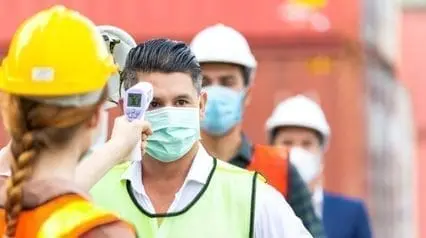Office Safety Guidelines
When the workforce commits to safety, the overall work environment develops a stronger and resilient safety culture. We’ve put together 10 general office safety guidelines below, to help workplaces follow through on safety:
1. Conduct office walkthroughs
Organize a team or assign personnel to conduct regular office walkthroughs and observe safety protocols. Pay close attention to various environments in the workspace and observe employees’ working circumstances to identify possible risks or hazards (e.g., collisions and obstacles, poor lighting, and environmental toxins).
2. Keep work areas neat and tidy
Employees should keep work areas uncluttered to prevent slips, trips, and falls. Cleaning and sanitizing as they go is also beneficial to keep the workplace free of harmful germs and viruses.
3. Promote employee hygiene
Employee hygiene has become a very real office safety concern. To prevent the spread of harmful viruses between employees, it is crucial to have controls in place such as wearing masks, applying hand sanitizers, and observing proper hand-washing techniques.
4. Dress appropriately
Depending on the nature of work, employees should carefully consider the most appropriate clothing to minimize common workplace injuries and accidents. This may include avoiding wearing dangling jewelry or ties and wearing closed-toe shoes. When and where necessary, personal protective equipment (PPE) should be worn.
5. Observe proper handling procedures
Proper lifting and bending techniques should be instilled in employees to prevent physical injuries. If an employee is not sure how to do this, it is better to ask for help from a supervisor or company safety officer.
Create your own Office Safety Checklist
Build from scratch or choose from our collection of free, ready-to-download, and customizable templates.
Browse Office Safety Checklists6. Avoid using tools or machinery you’re not trained for
While some tools may seem intuitive and easy to use, it’s always best to avoid using them without proper training. This is to ensure not only the safety of one individual but also the surrounding people.
7. Fully close doors and cabinet drawers
Avoid leaving doors, and cabinet and desk drawers open. They can be a cause of collision and tripping. Encourage employees to close them after every use.
8. Familiarize the workforce with emergency procedures
Run drills and training courses to guide employees on what to do when an emergency crisis occurs.
9. Take breaks appropriately
Well-rested employees are able to maintain their focus and awareness of their surroundings and safety which is valuable to maintain safety in the work environment.
10. Always report unsafe conditions
Have a system in place for reporting unsafe conditions. Empower your employees to speak up when something is amiss in the workplace and threatens their safety. A digital checklist makes a great tool for ensuring safety standards and measures are being implemented. It can also assist in performing site walkthroughs, inspections, risk assessments, or even reporting incidents.
Improve your EHS Management
Cultivate a safe working environment and streamline compliance with our EHS solutions.
Explore nowTake a deeper look into the major types of office safety and health hazards and learn how to specifically control them.



